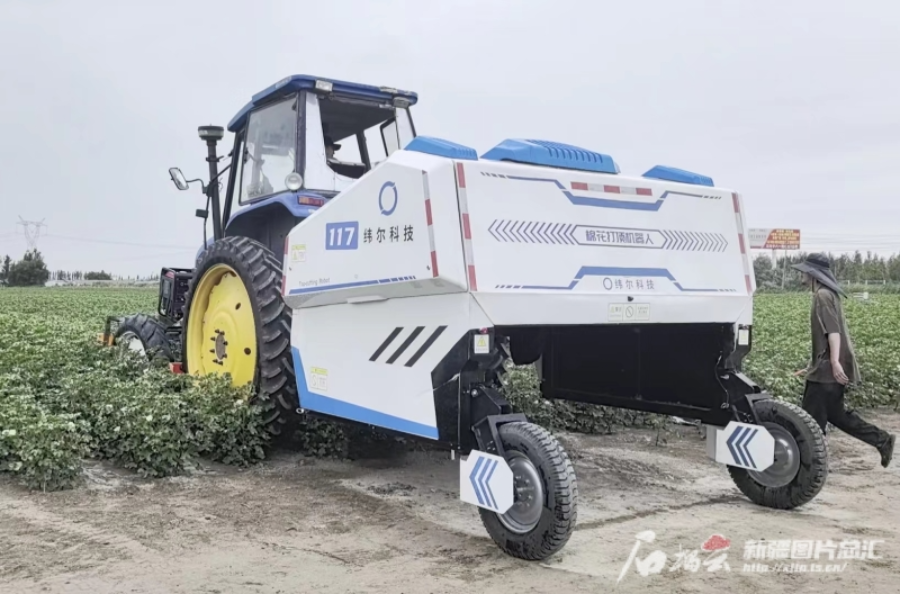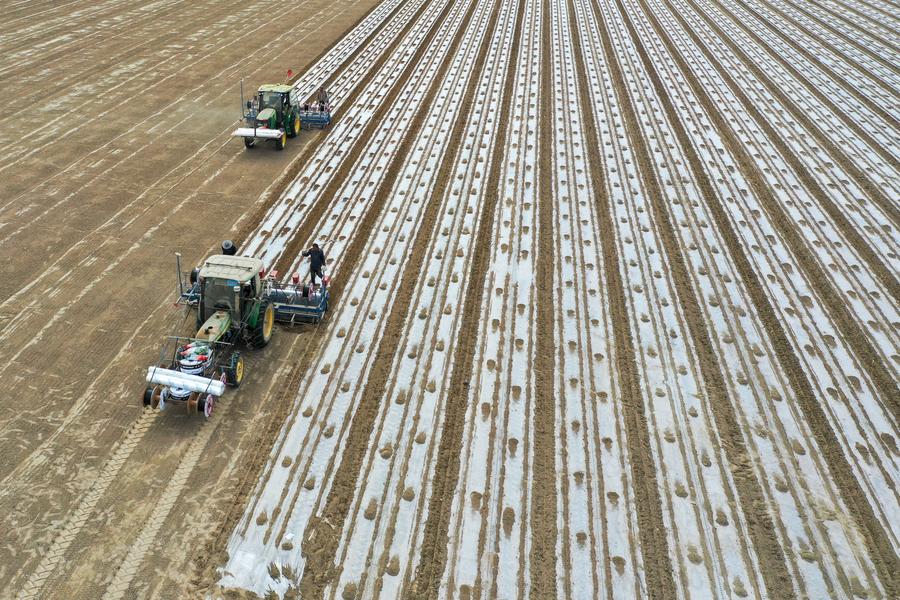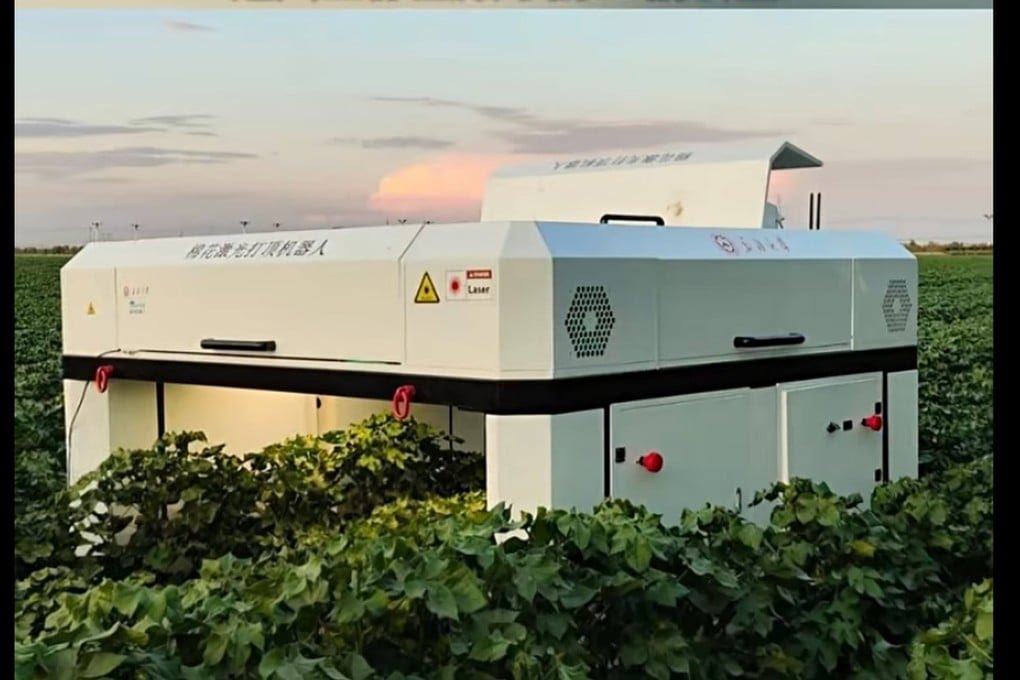In a historic leap for global agriculture, China’s cotton topping robot is set to revolutionize the way cotton is cultivated in Xinjiang. Dubbed the world’s first laser guided topping robot, this innovation automates one of the most labor intensive parts of cotton farming topping ushering in an era of precision, efficiency, and full automation. This development not only holds potential for boosting crop yields but also reduces the region’s reliance on seasonal manual labor.
The cotton topping robot comes as a response to the increasing demands for efficient farming technologies amid global labor shortages and rising costs. As Xinjiang contributes nearly 90% of China’s cotton production, the implications of this robot are significant both locally and globally.
Understanding Cotton Topping and Its Agricultural Importance
Cotton topping is a critical step in cotton cultivation. It involves removing the apical bud at the top of the cotton plant to encourage horizontal growth and even boll development. Traditionally, this is done manually or semi mechanically, often requiring thousands of workers to operate in tough field conditions under the summer sun. This task has been both time consuming and physically demanding.
With the arrival of the cotton topping robot, this bottleneck is addressed head on. Using laser sensors and AI navigation systems, the robot identifies the ideal cut location and executes the topping precisely, without damaging the plant. It also adapts to varying plant heights and field terrains, making it far superior to conventional machinery.
A Game Changer for Xinjiang Cotton Farms
A pilot trial of the robot was conducted in Aksu Prefecture, one of Xinjiang’s top cotton producing regions. Over 500 acres of cotton fields were topped using the new technology. According to Li Hao, a senior agronomist involved in the project, productivity increased by 37%, while labor costs dropped by nearly 70%. The quality of the cotton improved due to more consistent boll development and better plant health.
Local farmer Zhang Wen shared his experience, “I’ve been working on cotton farms for over 20 years, and this is the first time I’ve seen such a dramatic improvement in efficiency. The cotton topping robot did in three days what would have taken 30 workers an entire week. It’s accurate, fast, and requires no supervision.”

Expert Opinions on the Rise of Cotton Automation
Agricultural robotics expert Professor Liu Yancheng of China Agricultural University believes this is just the beginning.
“This cotton topping robot represents a significant milestone in precision agriculture. By integrating AI, machine vision, and laser technology, it addresses one of the last unsolved problems in cotton automation. We’re now one step closer to fully autonomous crop management systems.”
He emphasizes that such technologies not only reduce human labor but also promote sustainability. “Less machinery traffic means reduced soil compaction and better long term land health.”
According to data from the Chinese Ministry of Agriculture, the application of smart agricultural robots like the cotton topping robot could save billions in production costs over the next decade.
Socioeconomic and Geopolitical Impact
Xinjiang has often been at the center of global attention due to concerns around labor practices and supply chain transparency. By automating processes like cotton topping, China aims to demonstrate technological leadership while addressing international criticisms.
Moreover, this robot helps tackle internal labor challenges. The rural youth migration to urban areas has left many farms with aging workforces. The cotton topping robot bridges this gap, making it possible to maintain high productivity with minimal human intervention.
Dr. Emily Huang, a geopolitical analyst at the China Policy Institute, notes. “Automation in Xinjiang’s cotton sector may be part of a broader strategy to align agricultural practices with international compliance expectations. While the primary motive is efficiency, the political subtext should not be overlooked.”
The Farmer’s Perspective
While many are celebrating this innovation, not everyone is on board. Some rural workers have expressed concern about potential job losses. However! the Chinese government is offering retraining programs to shift labor into robot maintenance, data analysis, and logistics roles within the agricultural sector.
Liu Fang, a 45 year old field supervisor, shares her journey, “At first, I was scared I’d lose my job. But now, I’m learning to operate and troubleshoot the robot. It’s given me a new skill and more respect from my community. I earn more now than I did before, and I work fewer hours.” This shows how technology, when implemented responsibly, can uplift rural communities rather than marginalize them.
What’s Next for Agricultural Robotics?
Following the success of the cotton topping robot, similar models are being developed for other high maintenance crops such as grapes, tea, and soybeans. Companies involved in agricultural tech are seeing an increase in investor interest and government funding.
Startups like AgriBotics and MirrorTech, which co-developed this robot, are now looking at exporting their solutions to countries like India, Egypt, and Uzbekistan nations with sizable cotton industries facing similar labor challenges.

A Future Rooted in Smart Farming
The cotton topping robot is more than a machine it’s a symbol of the future of agriculture. By combining artificial intelligence, robotics, and sustainability, China has taken a bold step toward automating one of the world’s most vital crops. As the technology matures, it is expected to not only transform how cotton is grown but also redefine the labor and economic landscape of farming regions.
As the cotton fields of Xinjiang glow under the sun, a silent robot works with laser precision, sowing the seeds of a more efficient, sustainable, and ethical agricultural future.


1 thought on “China’s Cotton Topping Robot Promises Fully Automated Production of Xinjiang Crop”